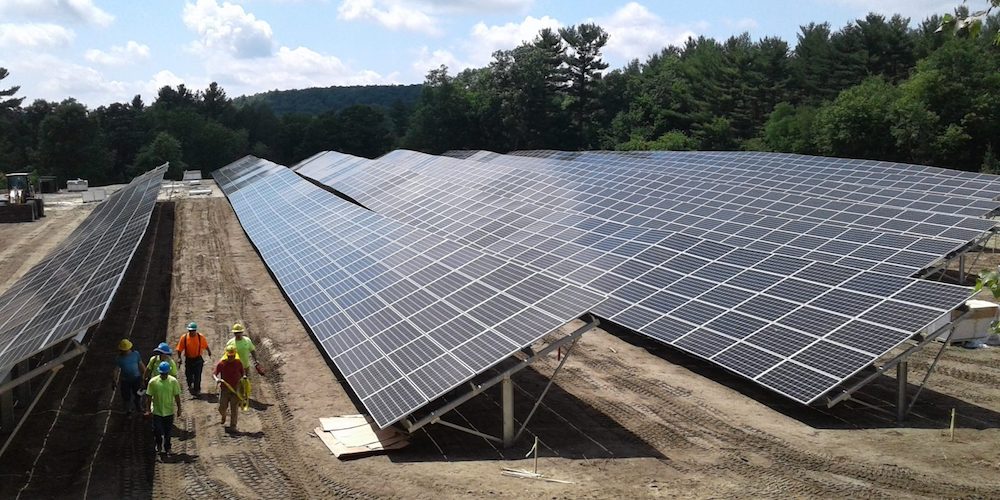Solar Energy Front to Look Up in India

In order give a big boost to the generation of solar energy in the country, the Modi government has approved a Production Linked Incentive (PLI) Scheme, namely, ‘National Programme on High Efficiency Solar PV Modules’, with an outlay of Rs. 4,500 crore.
Solar PV cells and modules are already being manufactured in the country. In order to further enhance domestic manufacturing of solar PV cells and modules, the Government has taken the following steps:
(i) Modified Special Incentive Package Scheme (M-SIPS) Scheme of Ministry of Electronics & Information Technology: The scheme mainly provides subsidy for capital expenditure – 20% for investments in Special Economic Zones (SEZs) and 25% in non-SEZs. The Scheme was open to receive applications till 31st December, 2018.
(ii) Production Linked Incentive (PLI) Scheme for High Efficiency Solar PV Modules: In order to enhance India’s manufacturing capabilities and exports, on 28.04.2021, Ministry of New & Renewable Energy (MNRE) has issued the Scheme Guidelines for ‘National Programme on High Efficiency Solar PV Modules’, with an outlay of Rs. 4,500 crores. The Scheme has provisions for supporting setting up of integrated manufacturing units of high efficiency solar PV modules by providing Production Linked Incentive (PLI) on sales of such solar PV modules.
(iii) Preference to ‘Make in India’ in Public Procurement in Renewable Energy Sector: Ministry of New & Renewable Energy (MNRE) vide its Order No. 283/22/2019-GRID SOLAR dated 09.02.2021, has inter-alia, prescribed that in public procurement of items in respect of which there is sufficient local capacity and local competition, only Class-I local supplier shall be eligible to bid. Class-I local supplier means a supplier or service provider, whose goods, services or works offered for procurement, has local content equal to or more than 50%. Solar PV modules are one of the products identified as having sufficient local capacity and competition.
(iv) Domestic Content Requirement (DCR): Under some of the current schemes of the Ministry of New & Renewable Energy (MNRE), namely CPSU Scheme Phase-II, PM-KUSUM and Gridconnected Rooftop Solar Programme Phase-II, wherein government subsidy is given, it has been mandated to source solar PV cells and modules from domestic sources.
(v) Imposition of Basic Customs Duty on import of solar PV cells & modules: The Government has announced imposition of Basic Customs Duty (BCD) on import of solar PV cells and modules with effect from 01.04.2022.
(vi) Discontinuation of Customs Duty Concession benefits: Ministry of Finance (Department of Revenue) vide its Gazette Notification No. 7/2021-Customs dated 01.02.2021, has rescinded its earlier Notification No. 1/2011-Customs dated 06.01.2011 thereby withdrawing the benefit of concessional customs duty on the items imported for initial setting up of the solar power projects with effect from 02.02.2021.
The ‘National Programme on High Efficiency Solar PV Modules’ targets direct employment to 30,000 people and indirect jobs to 1.2 lakh people.
The ‘National Programme on High Efficiency Solar PV Modules’ targets an additional 10,000 MW of integrated domestic manufacturing capacity of high efficiency solar PV modules with an investment of around Rs.17,200 crore.
It may be noted that the total installed renewable energy(RE) capacity in India, excluding large hydro, has crossed the mile-stone of 100 GW. Today India stands at 4th position in the world in terms of installed RE capacity, 5th in solar and 4th in wind in terms of installed capacity.
India has set ambitious targets for itself in the area of Renewable Energy, which the Ministry of New and Renewable Energy is committed to achieve.
While 100 GW has been installed, 50 GW is under installation and 27 GW is under tendering. India has also enhanced its ambition to install 450 GW of renewable energy capacity by 2030. If large hydro is included the installed RE capacity increases to 146 GW.
The achievement of installed RE capacity of 100 GW is an important milestone in India’s journey towards its target of 450 GW by 2030.



